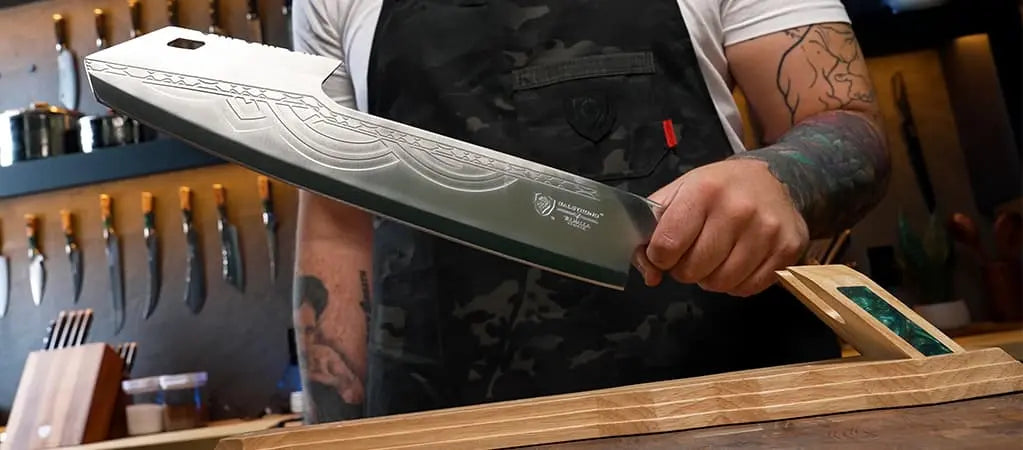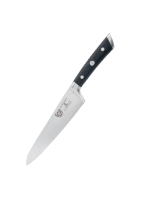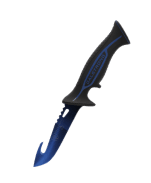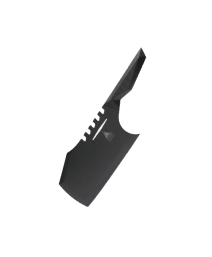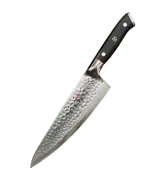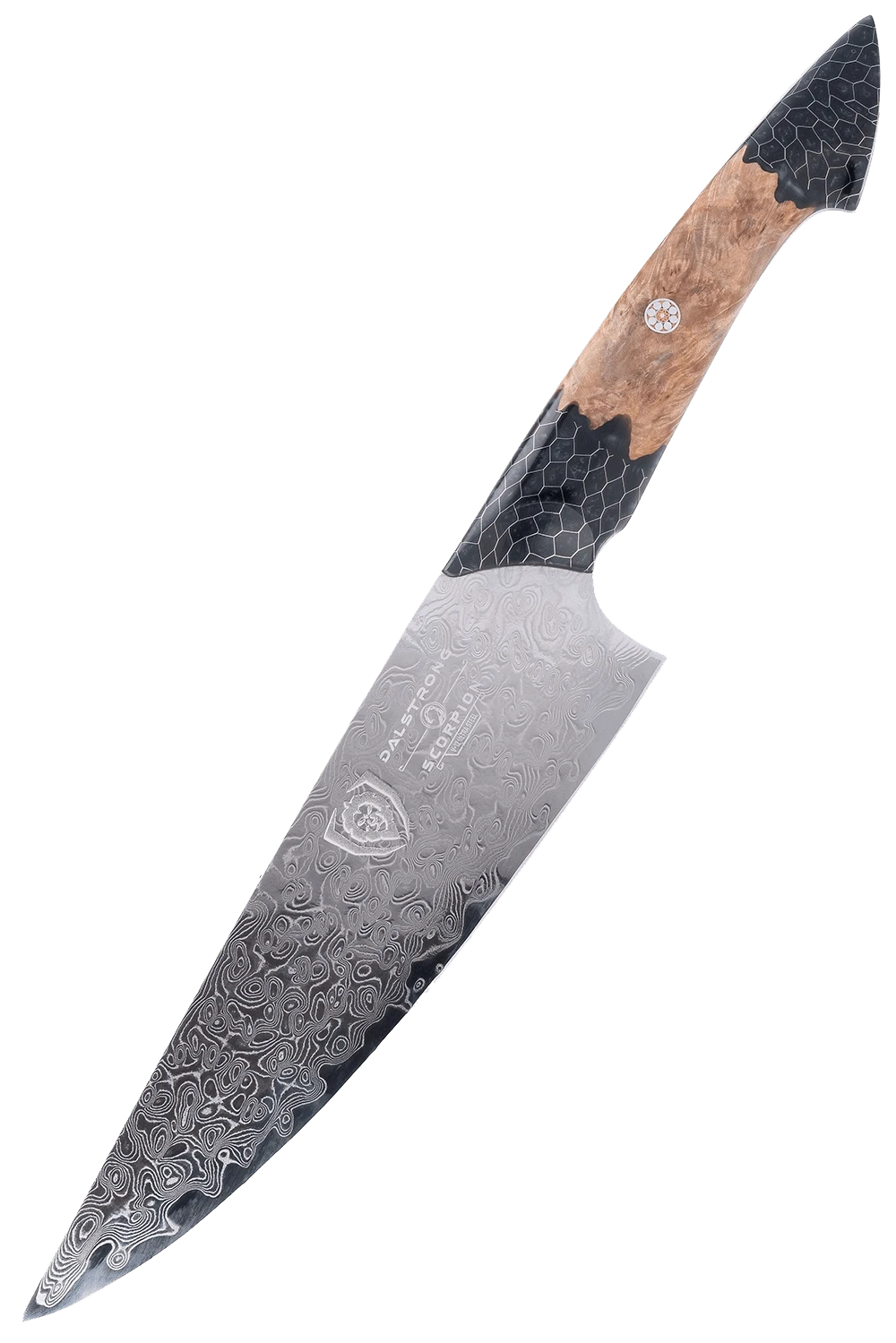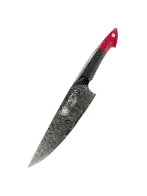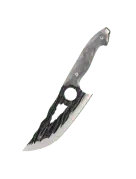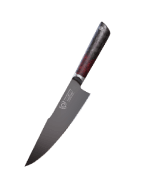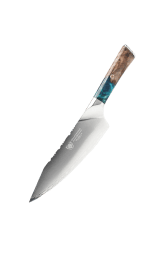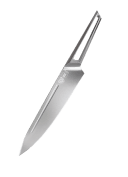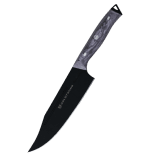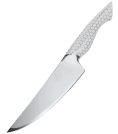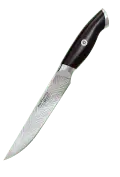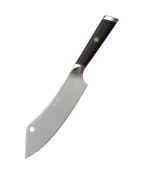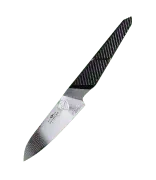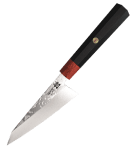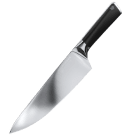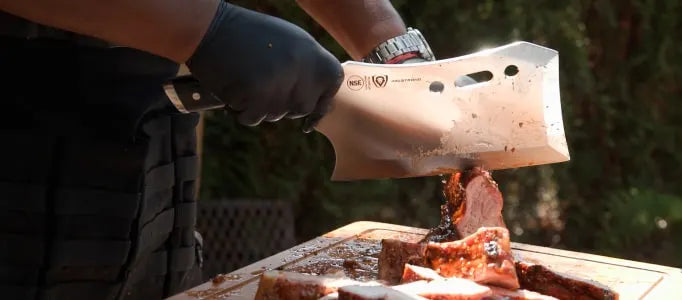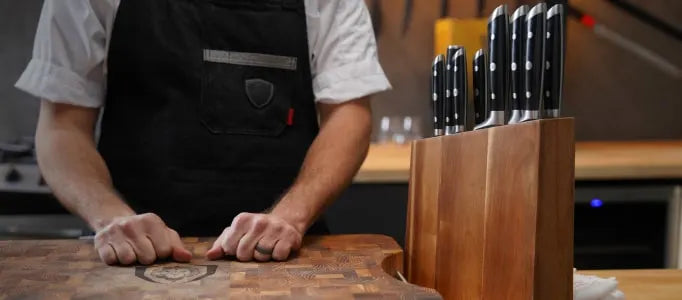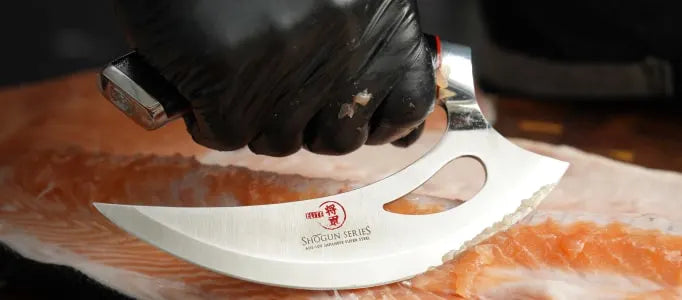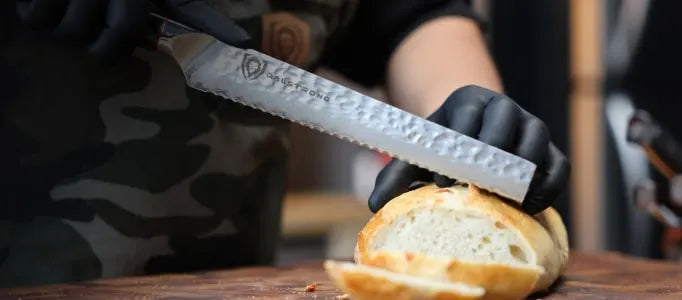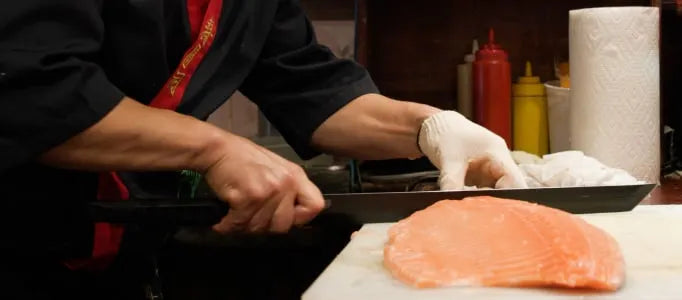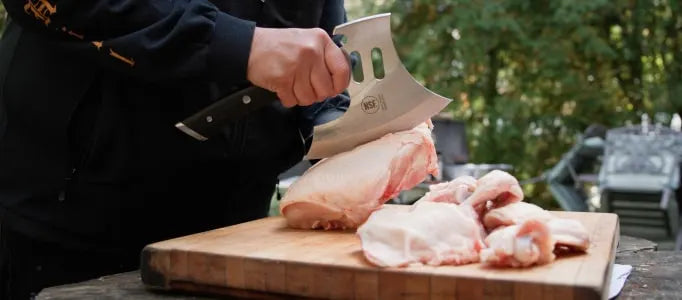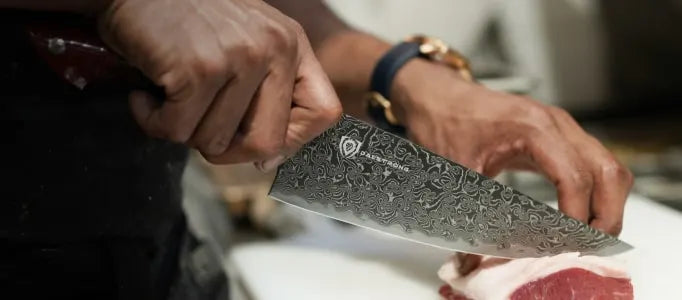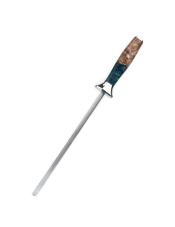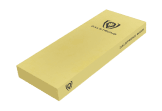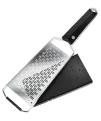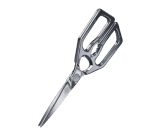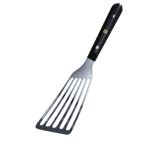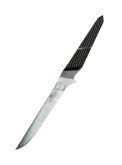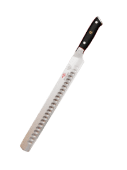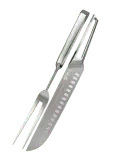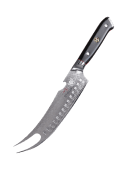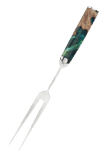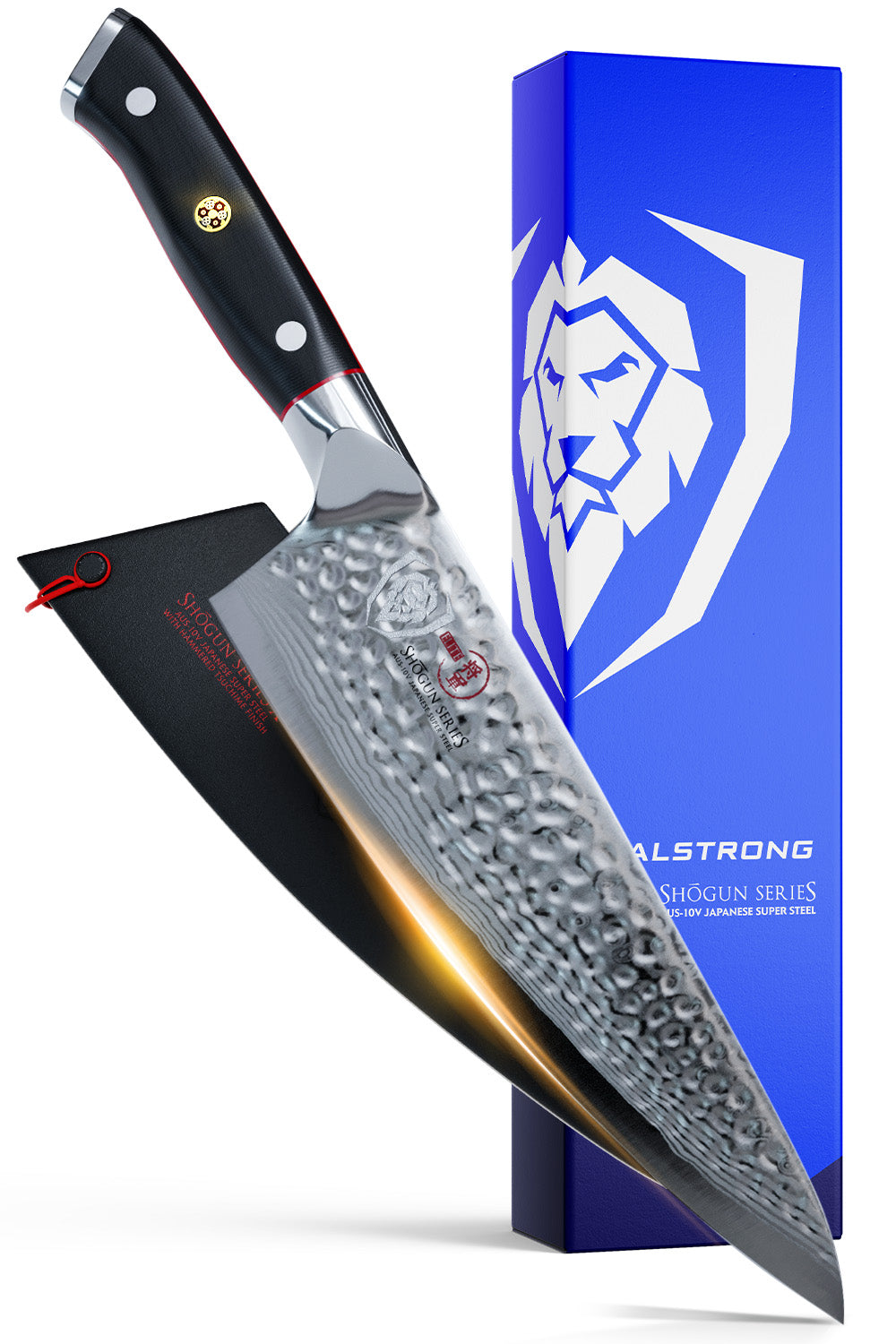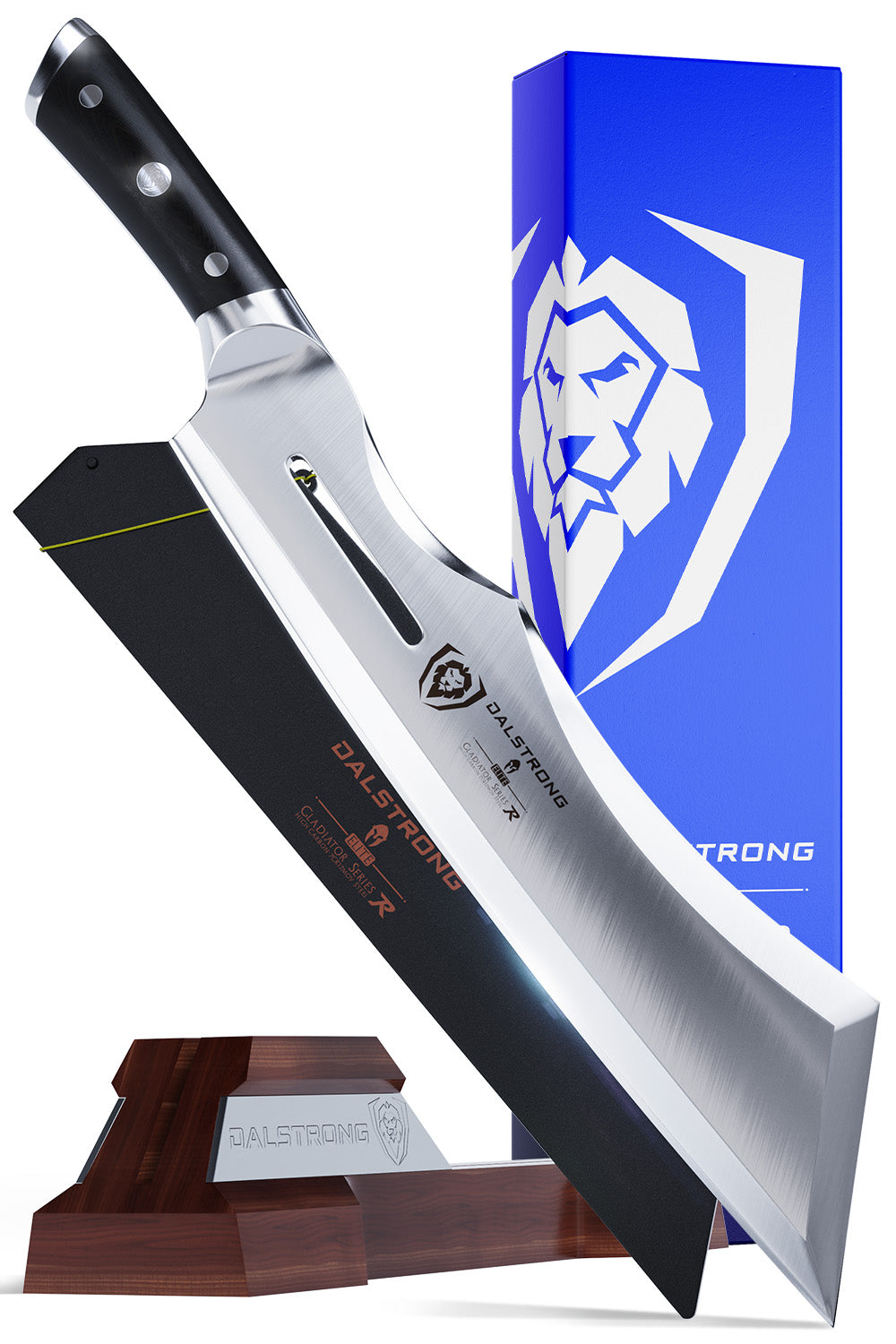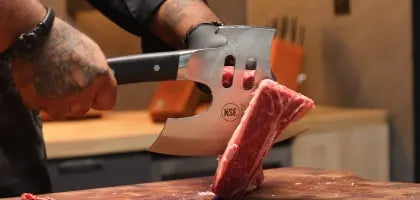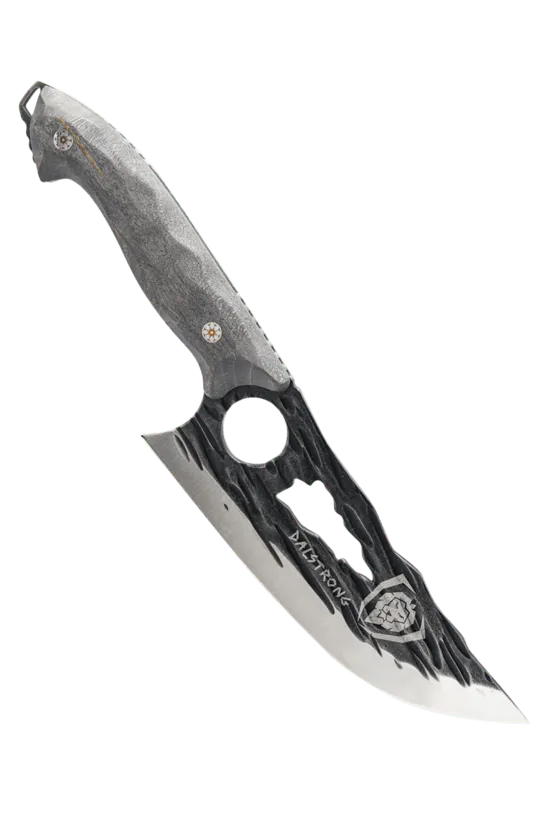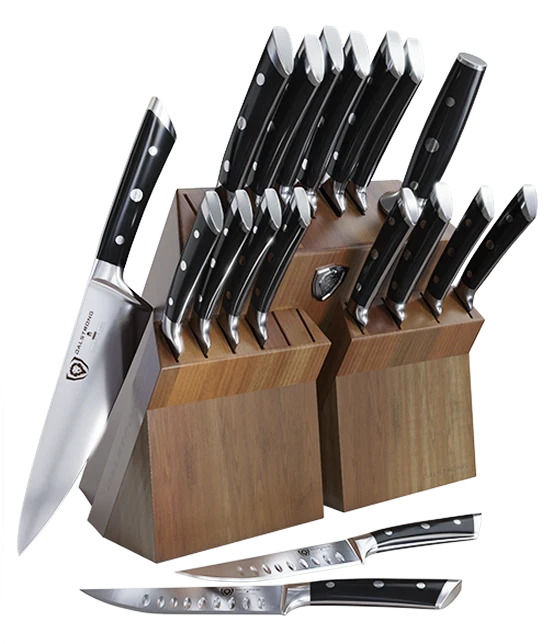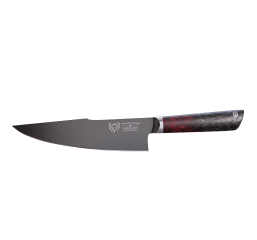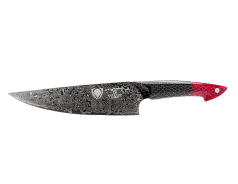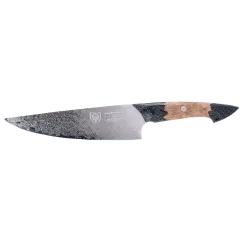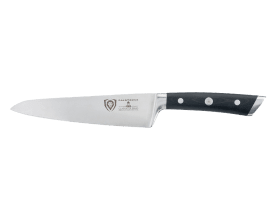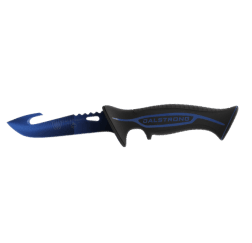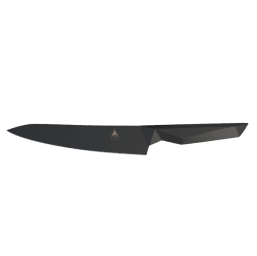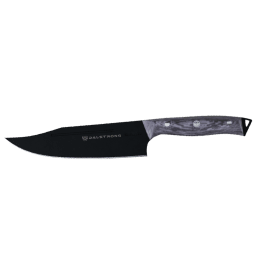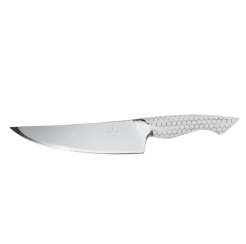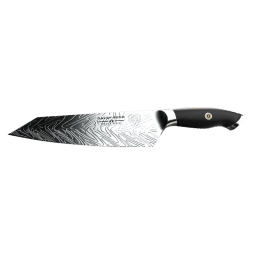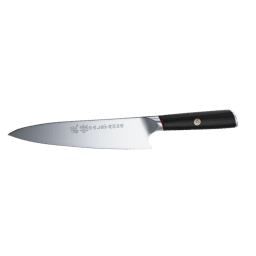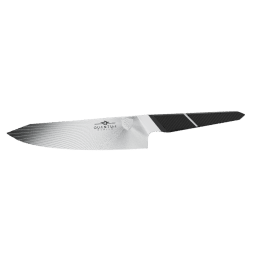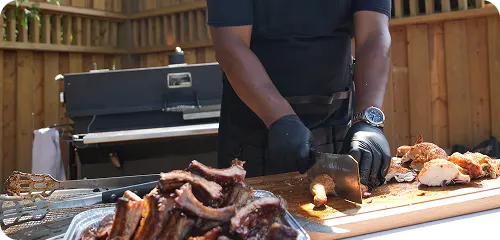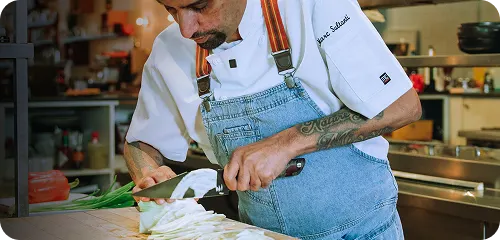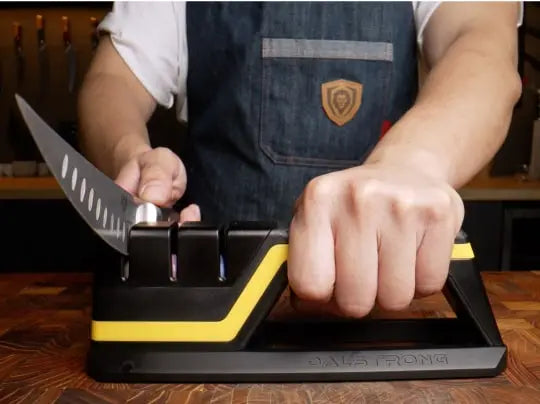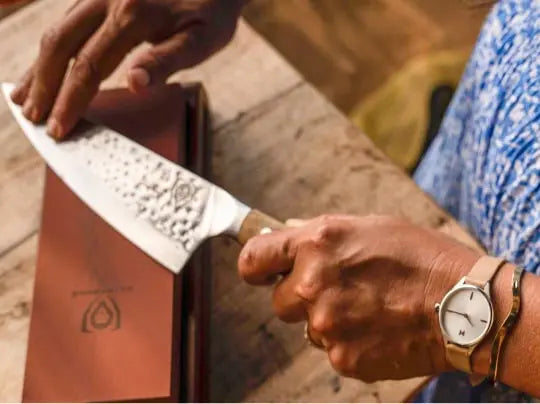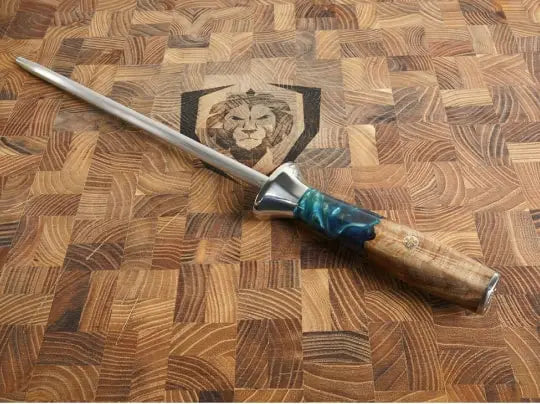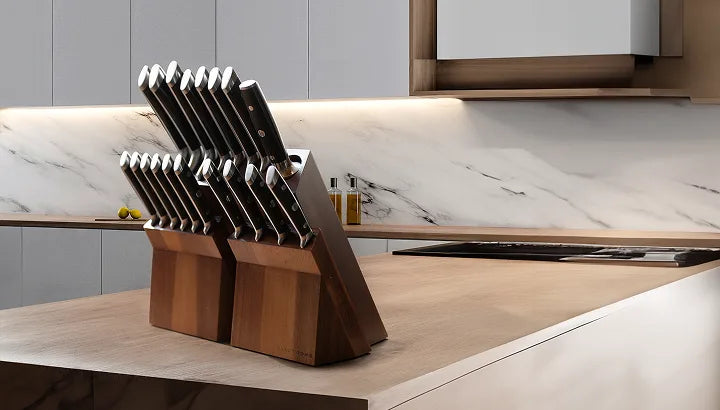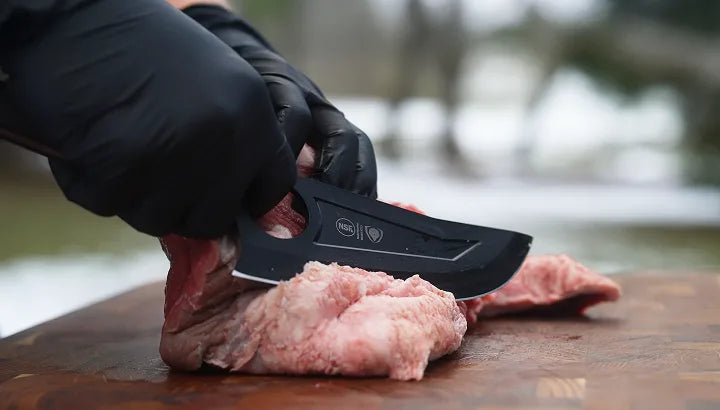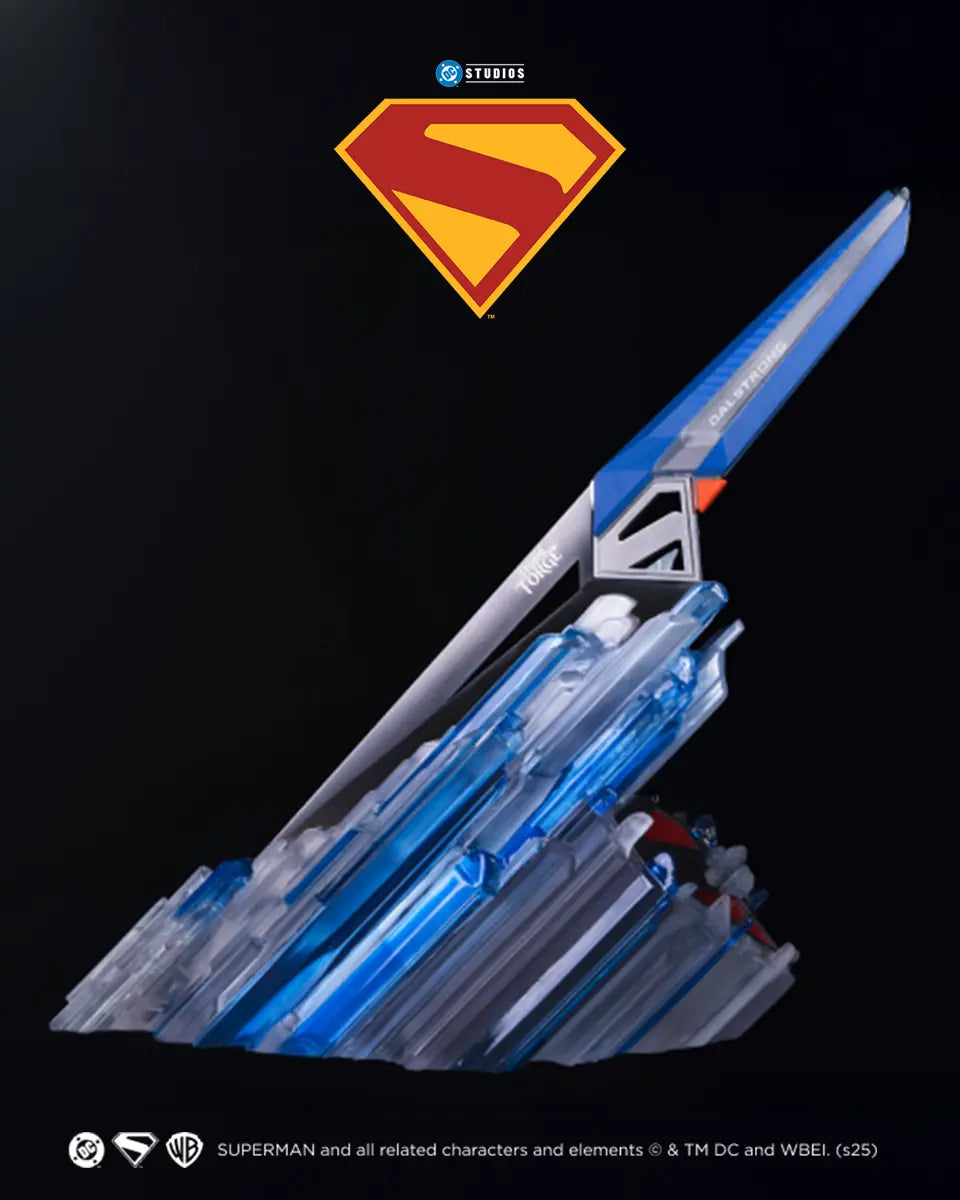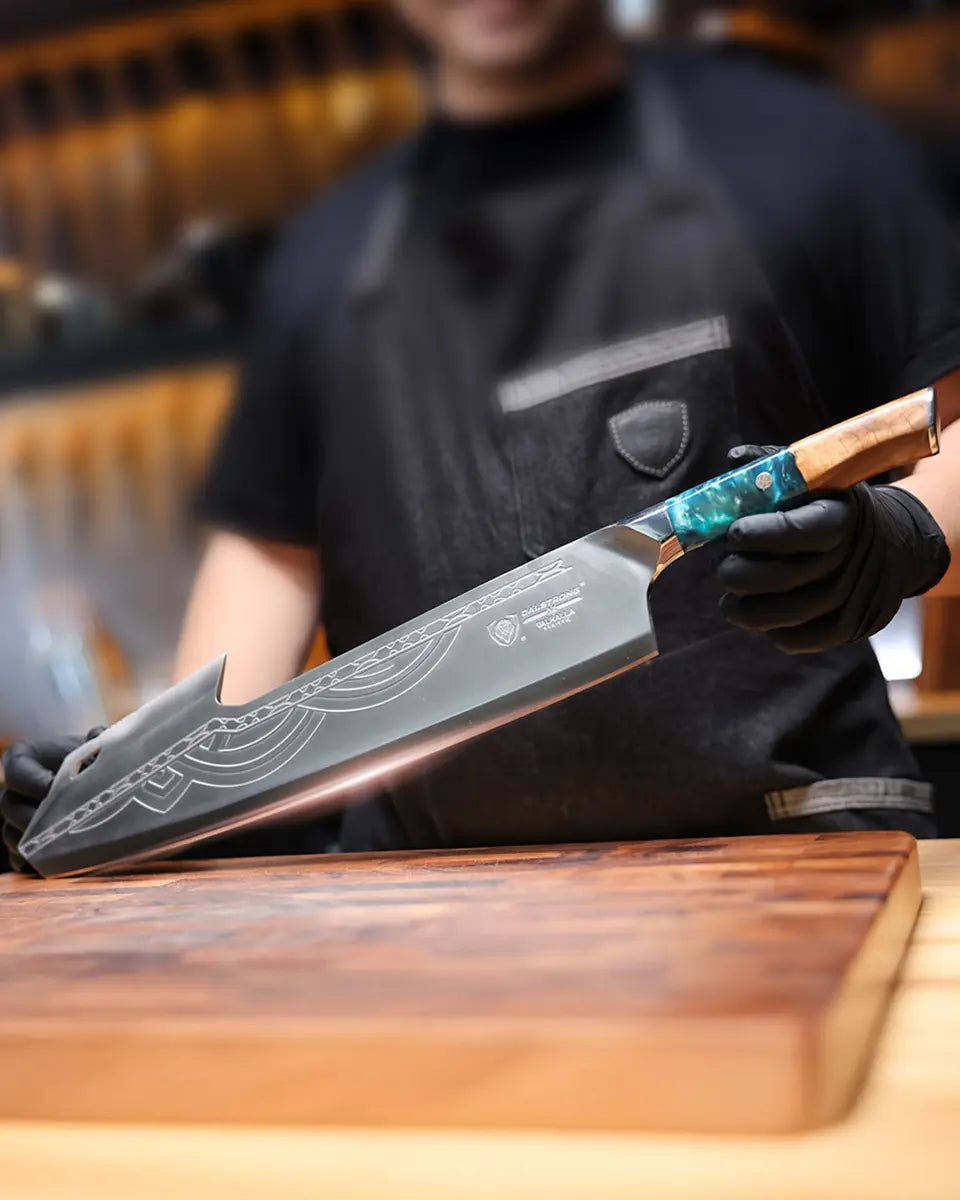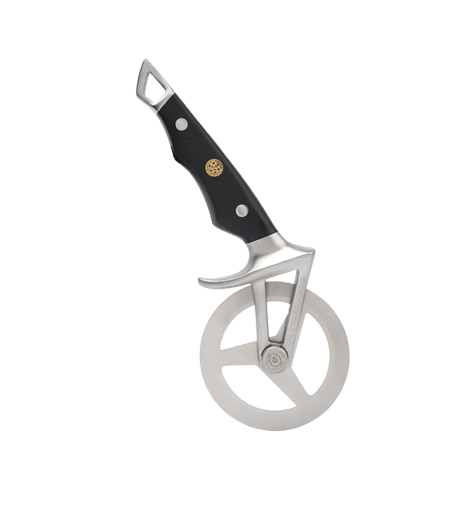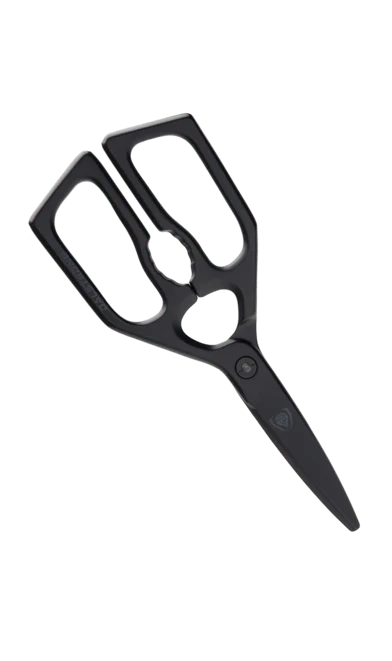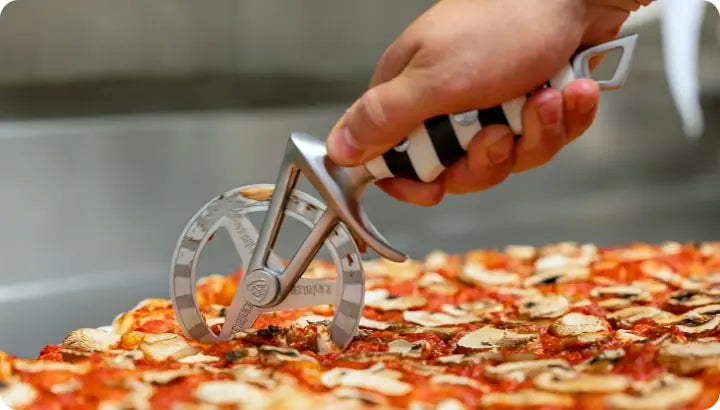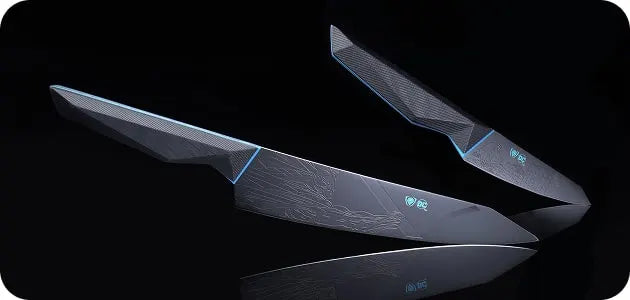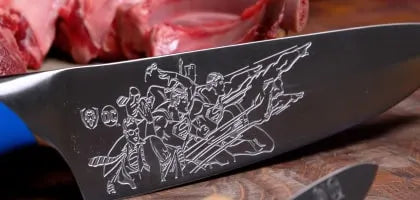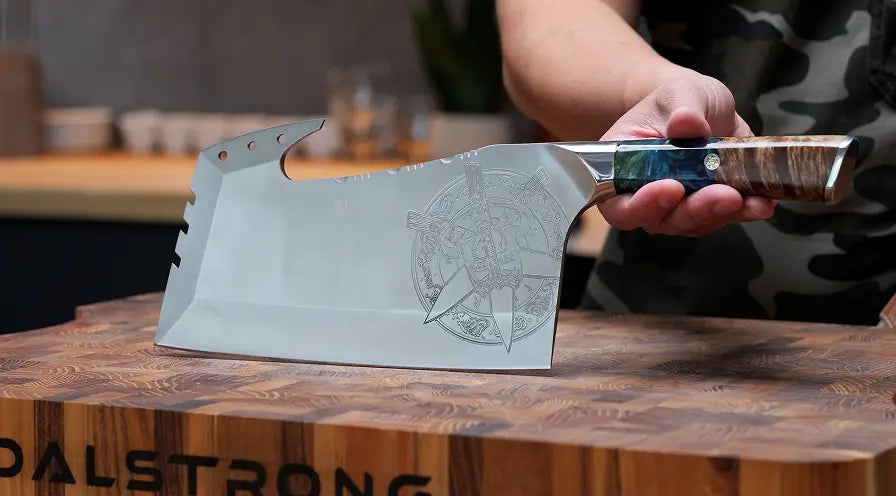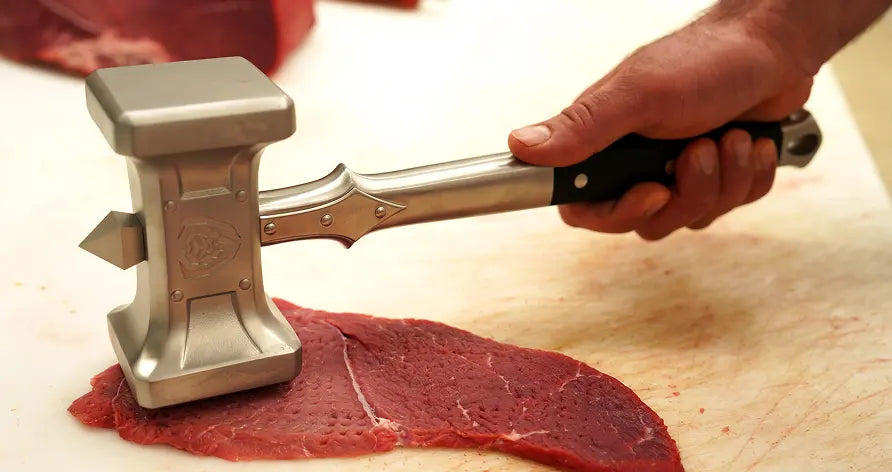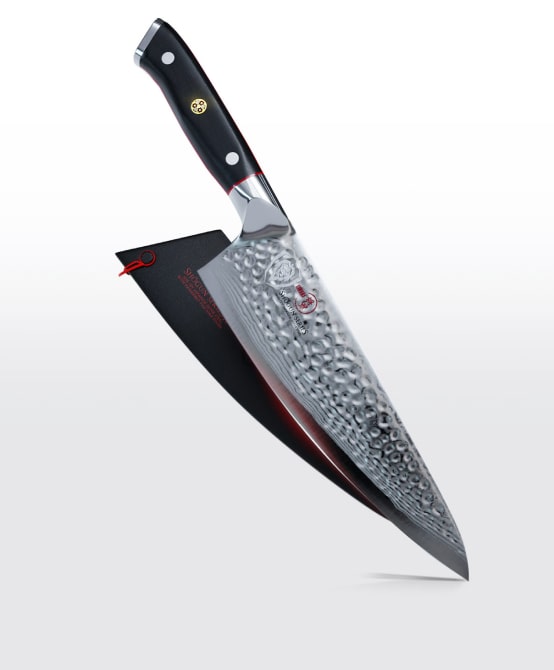15'' Meat Tenderizer | Dalstrong ©
What Is A Meat Tenderizer?
A meat tenderizer, also known as a meat mallet tenderizer or a meat pounder is a hand-powered tool used to even out and break down the tough cuts and sections of meat. While a meat tenderizer can be made out of any object with a sharp, yet large surface area, today, meat tenderizers or meat pounders are getting produced and manufactured to serve their sole purpose, which is to make the meat tender.
1. Why Do I Need A Good Meat Tenderizer?

15'' Meat Tenderizer | Dalstrong ©
A meat tenderizer can do much more than just even out chunky and oddly-shaped cuts of meat. When you tenderize a slice of meat, you puncture the meat and create holes in the tissues that join and connect your meat.
Essentially, the goal is to achieve a flat, well-textured slice of your store-bought chicken, lamb, steak, or pork chop. A lot of the foods we consume are injected with hormones and pesticides, so, while the easier option would be to purchase organic products, or simply swing for the expensive cuts of meat, it may not be financially beneficial for every individual or family.
This is where the meat tenderizer comes into the picture as a useful kitchen tool. If you open your refrigerator or freezer, you would notice big slices of chicken thighs or chicken breast, enlarged cuts of lamb and pork belly, these are all prime examples of where a meat tenderizer does its best work.
Evening out hard meats to avoid a chewy texture is a great idea, but it also promotes a decreased cooking time in the kitchen, since all the slices and cuts of flesh and muscle can be cooked at the same time, earning you a precise finish on your Beef Wellington or Flank Steaks – Something, seasoned cooks find to be quite a task, too. Meat tenderizers assist you in avoiding gristles as well.
Sure, there are plenty of ways of tenderizing your meat, such as pounding, marination and slow cooking, but, through the process of mechanical tenderizing, you receive the best results, thanks to its sharp blades.
2. How Versatile Is A Meat Tenderizer?
What if we told you that meat tenderizers aren’t a one-hit-wonder? There is so much more you can do than just use it as a tenderizer. Read on!
Garlic
You can crush and pound garlic bulbs (yes, amongst all these new garlic crushing tips and tricks, this one takes the cake). What’s better than one quick smash and peel? You can also crack peanuts, shell walnuts, pecans, pistachios, and of course, the greatest snack of all time – Groundnuts.
Potatoes
Not convincing enough? Okay, gotcha, gotcha. What’s one thing all human beings have in common? – Our love for potatoes. Sorry to break it to you, but mash potatoes are slowly becoming a thing of the past. But, smash potatoes? Now we’re talking. Get yourself a bag of fingerling potatoes or golden, Yukon potatoes. Slice and season them with olive oil and herbs according to your desirability, and instead of using glass bottoms, get your tenderizer out. You know the next step. Smash them just halfway through, thin enough to be thin cutlets as an addition to a family lunch or a quick snack. Sublime!
Peppercorns
You can use a tenderizer as an evolved version of a mortar and pestle. Crush those peppercorns for the passed-down recipe of your family’s steak with creamy peppercorn sauce. Or, Cacio e Pepe. You can even wrap some ice in a kitchen towel and smash it up for a chilled glass of Bailey’s. That sounds divine, doesn’t it?
Still, need some convincing? Tough crowd, but we’ve experimented quite a lot with Dalstrong’s 15” meat tenderizer that is coming soon, so we’ve got a lot of experience up our sleeve.
Ginger
If you need some hearty bowls of soup in this chilly weather, you can use your tenderizer to even out and smash some ginger or lemongrass.
Lemongrass
The same goes for a cup of masala or herbal tea. There are plenty of ingredients that go in different teas in different countries. Cinnamon crisps, smashed berries and orange peels, coconut shells. All of these ingredients need a good smash and pound, so feel free to bring out your tenderizer, and keep the rolling pin back in its place.
Seafood
When you’re making seafood at home, you can use it to crack lobster or crab shells as well. The shape of your tenderizer (hammer-shaped or masher-shaped) is ideal for cracking lobster or crab shells without damaging or pulverizing the shell.
Desserts
If you fancy a cheesecake, you can use your preferred choice of biscuits or cookies and pulverize them with a tenderizer too. Need some brownie or cookie crumbs for frozen yogurt or homemade ice cream? In that case, once you’re done baking these sweet treats, allow them to cool down. Once they’re at room temperature, put them in the refrigerator or freezer. When you’ve achieved the desired texture, get your tenderizer out and get smashing. And Voila, the perfect toppings.
Now, let’s discuss the common most question in regards to a meat tenderizer.
3. Should I Tenderize Steak?

8-Piece Steak Knife Set | Red ABS Handles with Storage Block | Gladiator Series
The choice of tenderizing steak is as personal as choosing the done-ness of it in a restaurant or when you’re cooking it at home. But, keep in mind that tenderizing helps lock and seal the flavor and juice of your steak. This happens because of the punctured holes throughout the meat which make it easy to absorb the marinade.
Ideally, skirt steaks and flank steaks should be tenderized since they have much long and tight muscle fibers which make it quite hard to chew them. Using a meat tenderizer for such steaks will help you plate succulent pieces at the end of your cook.
Another quite common question is – Which steaks should be tenderized?
Well, there are 4 types of steaks that classify as ‘tough meats’ and should almost always be tenderized before being broiled, fried or grilled, as said by Fred Decker.
- Flank Steak: This protein is obtained through the abdominal section of the cow. So, it has a decent portion of saturated fat around it, which makes it hard to cut.
- Skirt Steak: This is the kind of steak you would use for beef stroganoff or fajitas. This steak has meat fibers which make it quite a task to bite through them, and often end up tasting bland if they’re not tenderized, since the marinade doesn’t get absorbed properly.
- Sirloin Steak: It’s almost as if meat tenderizers were made to do this one justice. It is tough meat from a tough cut – The cow’s back. It needs to be marinated thoroughly, which can only be done after this thick cut undergoes a little beating from meat tenderizers.
- Tri-tip Steak: These are triangular, which is quite self-explanatory. But, what you might not know is that a tender cut steak as this one requires being tenderized since they’re also marinade-heavy.
Bonus for those looking for great beef recipes :
These 4 types of steaks also have 4 distinct ways of being tenderized, in ways different from a meat tenderizer. From using salt on the surface of the meat to using a marinade, these are many methods that have worked perfectly well for countless decades and generations. But, before you begin, keep in mind that your meat needs to be at room temperature. They cannot be frozen – Even partially.
1. Using a marinade: Marinating your steak in acidic solutions and enzymes is a true and tried technique. All you need to do is add lemon juice, lime juice, buttermilk or apple cider vinegar to your marinade and let your steak sit and soak in it for thirty minutes to an hour. This step depends on the size of your steak.You need to closely monitor your steak and make sure that the acid is not breaking it down too much and too quickly. If it begins to cook around the edges, remove the steak and place a fruit such as papayas, figs or kiwis on it. The enzymes in these fruits can tenderize the meat. You can also opt for a purèed form.
2. Pound: This is yet another true and tried technique. All you’ve got to do is lay your choice of steak on a cutting board and place a piece of plastic wrap over it. Using the sharp, spiky side of your meat mallet, pound it. Pounding meat can produce the smoothest texture on your protein.Start from the center and move towards each side. You can always use a cast-iron skillet or rolling pin if you don’t have a meat mallet/tenderizer.
3. Salt: Salting your steak is the most common way of tenderizing it. This helps break down protein cells in the meat. All you’ve got to do is rub sea salt or kosher salt over your steak and let the process take place. Not only will this technique break down the protein cells, but also enhance the quality and flavor of your steak.There you have it, folks. Remember to tenderize your steaks with a natural meat tenderizer like the ones mentioned above, or get yourself a meat tenderizer, meat mallet, or a meat pounder. Not heard of any of these? Keep reading.
4. What Are The Different Types Of Meat Tenderizers And How Do I Use Them?

15'' Meat Tenderizer | Dalstrong ©
If you’re tired of using a hammer, rolling pin or cast-iron skillet, this is your sign to invest in a good meat tenderizer. Hey, we’re in the new year, you deserve to give your arm and cutting board rest for the remainder of the year.
I’m going to walk you through the different types of meat tenderizers that have worked for a lot of people. They can either be hammer-shaped, or masher shaped. This truly is that one gadget we should all have regardless of our preferences in food or … celebrity chefs. (This was never up for a debate, but Guy Fieri wins this one, right?)
Hammer Shaped Tenderizers
Hammer-shaped tenderizers are the most common. Thanks to the convenience of holding and hand powering them. They’ve usually got two sides to it. A flat kind, which is used to even out and soften the meat. And, one with spikes, to tear and puncture through the meat. The body of a hammer-shaped tenderizer is made with stainless steel and has a decently covered cushion handle. However, if you prefer a handle made with wood, you can get those, too! Other than Dalstrong, meat hammer enthusiasts might be familiar with Oxo good grips or Non Pro Gripez.
Masher Shaped Tenderizers
Masher-shaped tenderizers are ten folds convenient than hammer-shaped ones. Naturally, this is owing to the long handle which gives you a good grip, and enough surface area at its rounded head to produce the most even and flattened piece of protein. Sometimes, the blade sticks out of one end, so be careful. Usually, the body of a masher-shaped tenderizer is made with plastic or metal, but the blades are mostly made of stainless steel.
Now that you’re aware of the most most common types of meat tenderizers, let’s go into more detail.
You must’ve heard of most of the below-mentioned tenderizers, or better yet, used them. The information ahead will help you determine the best meat tenderizer for yourself.
- Meat Mallet
- Blade Tenderizer
- Powdered Meat Tenderizer
- Natural Meat Tenderizer
- Commercial Meat Tenderizer
In the remainder of this article, we’re going to walk you through each one of the above.
1. Meat Mallet - Shaped like a mallet/hammer, it works perfectly well to ensure an even layer of thickness all around your preferred choice of meat. A meat mallet would have a textured side with spikes that would pierce and sail right past the meat as you hammer it.The flattening capabilities of a meat mallet are incredible, as it helps you cook your chicken or meat faster than you would with a chunky or larger piece of meat. The spikes help puncture holes, which instinctively penetrate the marinade further. This tool is 100% versatile, as it pounds and flattens meat while also puncturing it.
2. Blade Tenderizers - Though on the opposite end of the spectrum, a blade tenderizer and a meat mallet both work towards the same result. It is only the technique that is different. A blade meat tenderizer consists of more than a dozen blades and needles that cut through the meat’s muscle fiber. Assuredly, this helps enhance the flavor by perforating your steak or beef. An added benefit is the shortened cooking time.However, if you’re aiming to get thinly cut strips of steak or chicken, this might not be the best choice, since blade meat tenderizers would tear the meat apart entirely. This is why they perform best on thicker meats and steaks such as a fillet mignon. The clean-up process is also quite the task and can be potentially dangerous since you’re dealing with dozens of spikes and needles.
3. Powdered Meat Tenderizer - Bromelain Meat Tenderizer is one of the best-powdered meat tenderizers out there. It is known for having the ability to break down intricate protein chains. Bromelain is an enzyme that is extracted from the stems of pineapples.If you marinate steak, chicken, beef or pork with pineapple juice, you only need to marinate it for a very short amount of time. If you let it soak for too long, your meat is going to fall apart! Well, now we know why pineapple can’t be created into a jam and jelly form.
Bromelain has a long history of folk medicinal use, specifically as a topical medication. It is used in cosmetic products and as a meat tenderizer. I know, talk about killing two birds with one stone.
Bromelain refers to the two protease enzymes that are extracted from a handful of plants. Pineapple processors need to wear masks and gloves since the enzymes in the juice will eat away at your hands and face. Also, remember that bromelain cannot be attained from canned pineapple, as you need a fresh one to be able to extract all the marinade magic.
Papain is yet another powdered meat tenderizer. Bromelain and Papain are the best unseasoned meat tenderizers out there and can be easily found on the website of Chef Master.
Let’s get into a little bit of chemistry again, shall we?
The name ‘Papain’ comes from the fruit, papaya. Unlike pineapple and its stems, papain comes from the latex of papaya trees, as well as the fruit. However, the more it ripens, the lesser amount of papain remains in it. But, green papayas are loaded with it. It has a noble history that started in South America. Papayas were initially just used as a meat tenderizer, especially, on the tough cuts of meat.
The enzyme papain has a ridiculous side hustle, too. You’ll find this enzyme in tubes of toothpaste and teeth whiteners. It remains a key ingredient in powdered meat tenderizers.
So, feel free to eat papayas and pineapples by eating them in juices, mixing them in salads, or straight away as a fruit itself. Just remember, when marinating your chicken or pork, mix the juice or pulp with garlic, lime, diced-up chillies and cilantro so it maintains a good balance of tenderizing the meat and marinating it. However, don’t exceed the 30-minute mark.
And yes, this marinade can be used on fish too, but of course, you can’t let it soak in those juices for more than 10 minutes.
From people’s experiences, this marinade is best on the toughest meats out there, such as goats and sheep. Bromelain and Papain are both perfectly okay to use on tough cuts to break down collagen faster.
4. Natural Meat Tenderizer - There are plentiful natural meat tenderizers out there, too. Papaya and Pineapple as fruits are two of them, too. But, here are some more:
Tea
Tannins remaining from tea are natural tenderizers. All you’ve got to do is make 2 strong cups of black tea, let it cool for no more than 20-25 minutes, and immerse your choice of protein in it. You can let it sit in the tea bath for 24 hours. The longer you leave it, the tender it will be.
Coffee
Coffee is an excellent flavor-enhancing element, as well as a natural meat tenderizer. So, brew a strong, hot pot of coffee, allow it to cool, and soak in your meat for up to 24 hours.
Fruits
Pineapple, papaya, kiwis and figs are rich in the enzyme, papain. They can be used in commercial tenderizing products, too. If you’re unable to get your hands on bromelain or papain, simply cut these fruits into thin slices and apply or rub them on your protein.
Baking soda
Baking soda is simply miraculous. It can clean the deepest and dirtiest corners of your house, but also act as a natural meat tenderizer. You can brush your teeth with it, too. All you’ve got to do is sprinkle a small amount of baking soda over your protein, rub it all over, and let it sit in the fridge for many hours. Or, you can have a little DIY situation and make paste out of the soda. All you have to do is mix baking soda with water, coat the meat, and leave it aside to marinate. Just, remember to rinse your meat before you cook it!
Soy Sauce
Soy sauce is known to break down Myosin, one of the toughest proteins in meat. And, this technique would be much more efficient on a thicker cut. They also enhance the flavor of your dish. But, don’t let your meat soak in it for more than 4 hours.
For those of you who love food and cooking, be sure to check out delicious Dalstrong recipes.
5. Commercial Meat TenderizerA commercial meat tenderizer is one that you would find in large kitchens such as a restaurant. These machines can cut a flank steak, sirloin, chicken, breast, pork chops, or different areas of the pig to make fajitas or a stir-fry.
It can be automated to cut strips of cooked ham or cheeses. This especially is a vital instrument for salads and garnishes. They usually have stainless steel blades for resilience and durability that can cut and slice the meat very firmly. If desired, as firmly as cooking one single steak.
A meat cuber can also be considered a commercial meat tenderizer, as they are slowly, but surely becoming a common find in restaurants and grocery stores. Truly owning the ‘commercial’ in its name.
Bonus : If you're interested in meat tenderizers then this cool meat thermometer might be up your alley too.
5. Coming Soon – Dalstrong’s Meat Tenderizer

Meat Tenderizer 15" Dual Sided, Heavy Duty & Extra-Large Hammer
Speaking of a true and tried kitchen warrior, we have a fierce tool coming up. Dalstrong’s very own 15” meat tenderizer is launching soon! We call it the war hammer. If you’ve seen it, you know that there couldn’t be a more justifiable name.
A strong, 3.9lb, 304 Stainless Steel meat tenderizer with only one target – Pumping up the flavor. Now, you know that we love an ultra-premium G10 handle, and it’s no different this time. This also makes handling the meat hammer quite easy. Traditionally, it has two sides to it. One, with a smooth side to flatten your prey, and the second, to puncture and tenderize the protein for the marinade.
Serving maximum versatility by allowing you to break up frozen vegetables and crushing nuts, there are bountiful ways to pay tribute to Thor.
It has a sleek satin finish with the classic Dalstrong Engraved logo to go with it. This hammer-shaped hero is stain-resistant and low maintenance. It is neatly sealed with Dalstrong’s Renowned Packaging.
Pros:
- The structure is sturdy, which allows it to withstand the strongest of blows to its surface when doing its thing on the cutting board.
- This kitchen tool is resistant to extreme hot and cold temperatures, as well as acids and chemicals, which only encourages its longevity and durability.
- It is shock-absorbant, which is a key component for any meat tenderizer out there. This prevents arm fatigue, and most importantly, prevents any mishaps or accidents.
- Let's face it, this thing looks cool. Certainly one of the most powerful looking stainless steel meat tenderizers
Cons:
- If you’re not a meat enthusiast, our tribute to Thor may or may not be for you. Fear not, there are plenty of other cool kitchen gadgets here at Dalstrong.
- The 15” size of this hammer-shaped meat tenderizer could intimidate you.
6. Frequently Asked Questions About Meat Tenderizers

Shadow Black Series 5'' Steak Knife Set | Dalstrong ©
What is a good meat tenderizer?
A good meat tenderizer would have two sides to it to provide the best results. The first side would have a smooth surface to flatten your choice of protein. And the second one would have stainless steel blades to puncture through your prey and break through the tough muscle fiber.
Does meat tenderizer really work?
Absolutely! This question calls for a quick experiment. You can choose your preferred choice of meat and try it both ways. One could do without the tenderizer, and one with. I can guarantee you, the flavor profile in the piece of meat that has been tenderized would be much stronger and easy to eat, as well as digest.
How can I tenderize meat quickly?
There are plenty of ways, so pick that one that works perfectly well according to your palate and convenience. Meat Mallet, Blade Tenderizer, Powdered Meat Tenderizer, Natural Meat Tenderizer, Commercial Meat Tenderizer.
What are 3 ways to tenderize meat?The 3 most common ways to tenderize meat are by using a meat mallet, powdered meat tenderizer such as bromelain or papain, or a natural meat tenderizer.
Check Out Dalstrong Today
Written by Ananya Tiwari
Ananya loves the fine things in life. When she isn’t penning down poetry or song lyrics, she spends her time cooking and creating recipes while also enjoying new cuisines.



